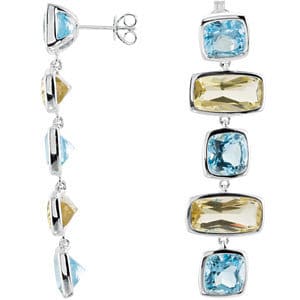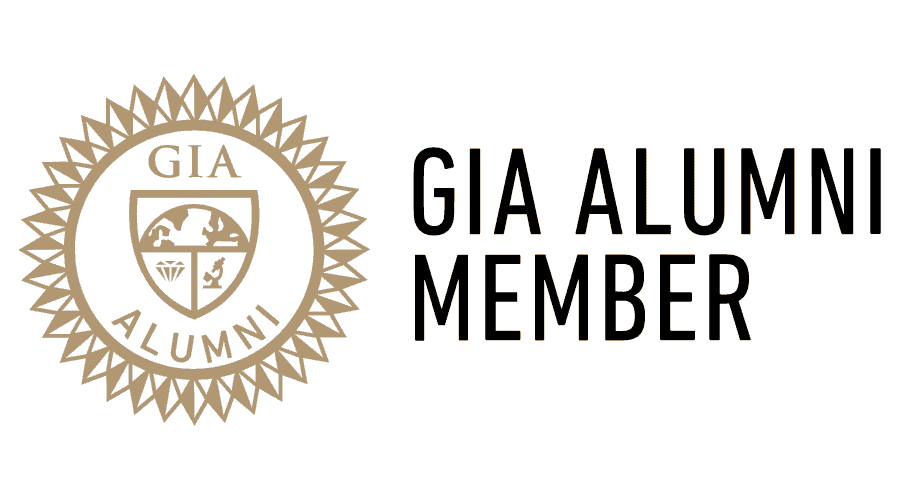 “Who first comes to this world below
“Who first comes to this world below
In dreary November’s fog and snow,
Should prize the Topaz amber hue,
Emblem of friends and lovers true.”
In November, a month known for rain, falling leaves and temperatures, the sun is often missed. So the warm, rich glow of this month’s gemstone is a welcome sight.
For November, two gems are actually listed, and both are in the same color family, with the same glow — yellow topaz and citrine. Many times, the two are often confused for one another.
Here are some interesting facts and useful tips about both: Topaz is a stone of strength. It’s also tough — one of the hardest minerals in nature, measuring an 8 on the Mohs scale.
The name’s origin: The name Topaz is derived from the Indian Sanskrit word tapas, meaning fire. According to another theory topaz derives its name from Topazos, a small island in the Red Sea, where the Romans obtained a stone which they called by this name.
Topaz is found in the following countries: Brazil, Nigeria, Sri Lanka, Pakistan and China.
Topaz is commonly colorless, also light to medium blue, violet yellow, pink, peach, gold, green, red and brown. Topaz with orange-red and pink colors are rare and most valuable.
Wedding anniversary: Topaz is the anniversary gemstone for the 4th and 19th year of marriage; and Imperial topaz for the 23rd year of marriage.
Care and treatment: As Topaz has a hardness of 8, keep your gems in separate boxes to protect other jewelry from scratches. Also avoid large temperature changes. Topaz often becomes paler if kept out in the sun. Do not clean topaz in a home ultrasonic cleaner. The best way to clean topaz is warm soapy water.
Healing ability: Topaz stimulates an endocrine system. It assists in general tissue regeneration. Topaz is valuable in the treatment of hemorrhages. It also increases poor appetite and helps fighting blood disorders.
Mystical power: Topaz balances emotions and calms passions. It releases tension and gives feelings of joy. Topaz is known as spiritual rejuvenation gemstone.
About CITRINE: The name’s origin: The name citrine is derived from the French word ‘citron’ – lemon.
It is one of the more rare varieties of quartz, and is thought of as a sister to amethyst. Its hues range from the lightest yellow to warm orange to the darkest amber. The dark amber stones are named Madeira because their deep color so closely matches the wine.
Citrine is sometimes called “Bohemian Topaz”, “Madeira Topaz” and “Occidental topaz.”
Birthstone: Citrine and Topaz are birthstones of Scorpius (Scorpion): Oct. 24 – Nov. 21 .
Wedding anniversary: Citrine is the anniversary gemstone for the 17th year of marriage.
Care and treatment: Citrine can be easily scratched. Citrine permenantly changes color if left in the sunlight for several hours, hence citrine jewelry should be kept away from prolonged exposure to strong light or heat.
From the stone history: Citrine is a gemstone which has been used in Greece since the Hellenistic period (end of the 4th to the end of the 1st century BC).
Healing ability: Citrine is valuable in the treatment of depression, it eliminates self-destructive tendencies. Citrine is said to stimulate memory.
It aids digestion, and removes toxins from the body. Citrine is a good healing stone, especially for heart, kidney and liver. It helps fighting diabetes.
Mystical power: Citrine symbolizes light-heartedness, joy and happiness. It calms and soothes.
Citrine is the signature of wisdom and peace, enhances creativity, and motivates writers.
Citrine was believed to protect against poisonous snake bites and evil thoughts. In contrast, yellow topaz was believed to make the wearer strong and invisible in times of emergency, so snake bites and mean thoughts probably were not a problem.




